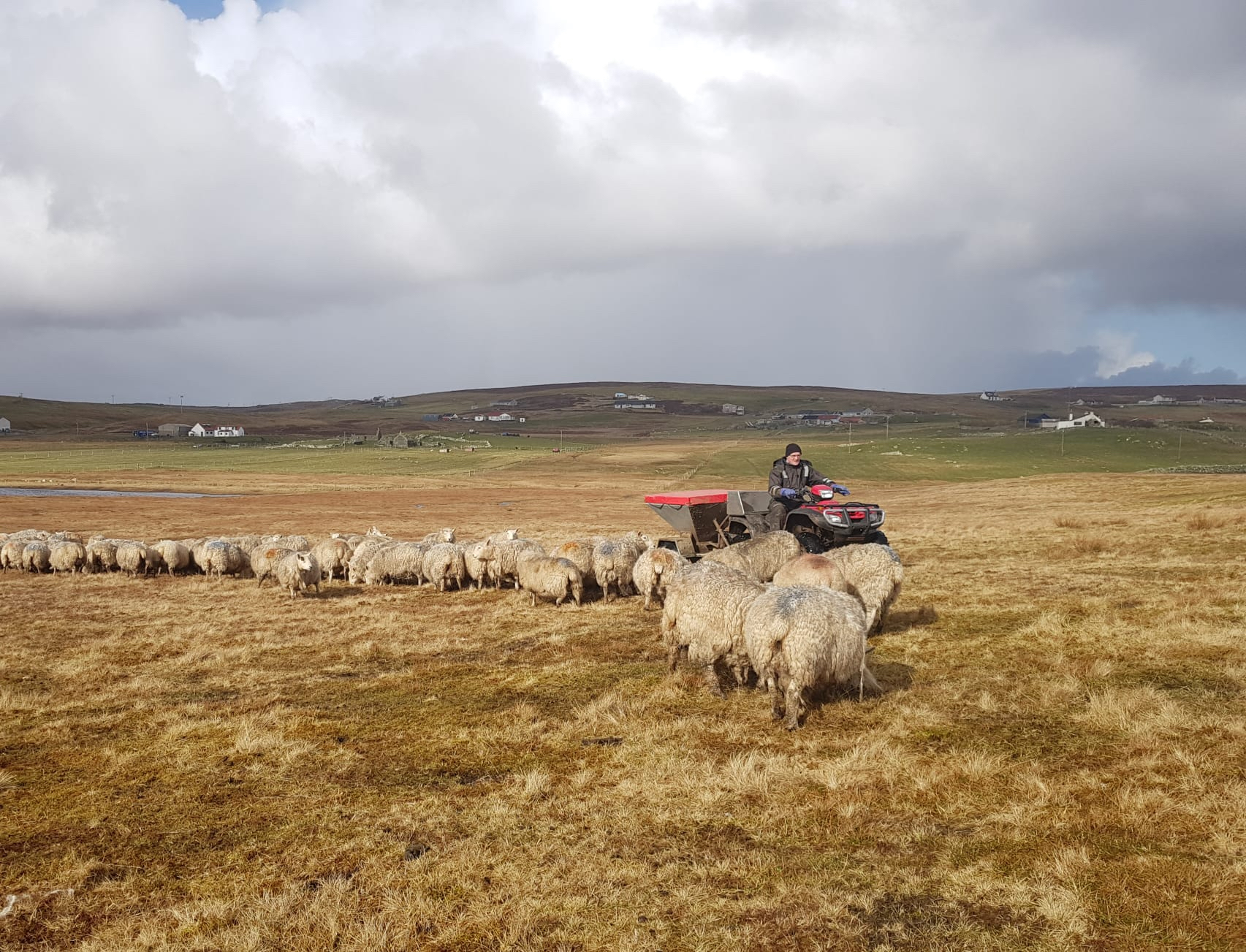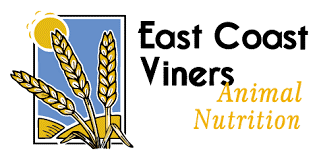On Shetland’s islands – 16 of which are inhabited – agriculture is a key component of the community and its economy. The livestock mart at Lerwick, run by Shetland Livestock Marketing Group, regularly fills with sheep and cattle from the island’s crofts and hills. Farmer, Laurence Odie, can be found helping during busy periods, penning up sheep and cattle, loading livestock onto trucks and helping the business to run smoothly. Laurence also farms with his son, on Yell, one of the North Isles of Shetland. Together they run 650 breeding ewes and a small herd of Pedigree Shetland cattle, on their 150-hectare croft, adding shared common grazing on the hill to their farmed hectarage, which expands feed availability and variety.
Laurence worked full-time at the Laurence Odie knitwear factory, and since transferring ownership to its employees in 2019, he has been able to concentrate on farming at home and helping rural neighbours with their livestock. Working at the mart enables him to maintain the social aspect of farm life, he says, “I like working with livestock and meeting people, so when the mart is busy, and I have time, I enjoy helping out.”
Laurence was President of the Shetland Cattle Society in the year 2000, when along with another breeder presented two in-calf Shetland heifers to HRH King Charles, at the Shetland Millennium Show. These heifers went on to join the King’s rare breeds herd, residing at Highgrove.
Cattle and sheep thrive on Shetland; Laurence believes that the ever-changing conditions create the right environment to breed hardy livestock. “Sheep do well here, outwintering on the hill, with in-bye grazing for commercial and lambing ewes. When they can’t eat the shorter grass, and favour easier conditions, they are sold, usually to Aberdeenshire, before going to England. Shetlands are a hardy breed and will live and reproduce for many years.” Breeding ewes are sold at four to five years old, via Shetland Livestock Marketing Group, he says, “Buyers know they are getting healthy, hardy livestock when they buy from Shetland.”
Maximising ewe fertility as well as wool quality for the knitwear is achieved through supplementary nutrition. The remote location can make this challenging but has been made simple by way of a joint order, with multiple farmers grouping together to purchase a 28-tonne artic load of feed, from a supplier on the mainland, East Coast Viners. Laurence has worked with the company for over 20 years and values the ease in which the order can be placed and delivered, offering consistency in feed quality and quantity. They have even developed a Shetland formula to suit the island’s unique terrain.
He says, “One farmer buys the bulk feed order, with smaller farming businesses adding to it, filling up a 28-tonne artic load to minimise transports costs. I then collect what we need and know exactly what we are getting and how it will support our flock. The Shetland 18% blend was created by a farmer here some years ago and suits our in-bye sheep well. Grazing is restricted inby [land close to the croft], so we supplement the ewes to support condition and fertility. Pre-tupping, tups are fed on the 16% Tup Coarse Mix, and at the same time, ewes have access to ‘Ewe Gold Buckets’, which we keep out throughout winter. We then feed commercial in-bye ewes using a snacker, twin lambers are given East Coast Viners’ own 18% Ewe Rolls from late February, and the singles are fed this from early March. We lamb for three to four weeks from mid-April, and since using the Ewe Gold Buckets, our conception rates have improved, and lambing percentage has gone from 130% to 170%. The benefit of using these buckets is clear.”
Laurence crosses 90 of the 110 Shetland inby ewes with a Cheviot, adding ewe lambs to the commercial breeding flock. A Shetland tup is used over 20 Shetland ewes, providing pedigree breeding stock for replacements and sale. Suffolk tups are used across the commercial Shetland x Cheviot ewe flock, producing store lambs for sale at the mart. Most of the Shetland ewes winter and lamb on the hill and are only taken off the hill a few times each year.
Shetland breeding lambs are selected based on their wool quality and hardiness, as he explains, “We have a strong wool trade here in Shetland, with wool products sold to Japan and the USA as well as domestic markets, it is therefore important that our sheep have positive traits for their fleece, and an ability to thrive on the hill.”
Laurence keeps a closed flock, only occasionally buying in tups, he says, “Shetland has a disease-free status, animals entering the island are blood tested and dipped on arrival, and then isolated until all tests are clear, they are then re-tested in six months’ time. We are proud to produce healthy livestock here.”
Now at 70 years old and having lived all his life on Shetland, Laurence credits his health to a strong sense of community, getting outside every day and enjoying the positive mart environment.
He says, “We all work together to keep things going, helping each other out. Ordering livestock feed from East Coast Viners, as a group of farmers, ensures our sheep get the nutrients they need, with a smooth delivery process. We are grateful for the bespoke Shetland feed blend and the consistent quality of the feeds, that help our livestock, and businesses, to thrive on Shetland.”

